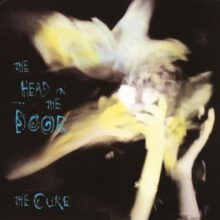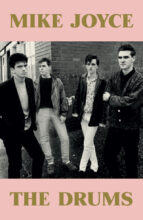In 2026, Brisbane audiences will be given a rare and remarkable opportunity: the southern hemisphere premiere of The Last Ship, the acclaimed musical written and composed by Sting.
Presented at the Queensland Performing Arts Centre’s Glasshouse Theatre, the production will mark a milestone moment in Australian theatre, bringing to life one of the most personal and poignant works ever created by the legendary musician.
For Sting, The Last Ship has always been more than a stage show. It is a deeply felt tribute to his hometown of Wallsend in northeast England, where the shipyards once defined the rhythm of daily life. Inspired by the decline of that industry and the resilience of the people who lived through it, the musical blends raw emotion, social commentary, and music that reaches into the soul.
“I literally grew up in the shadow of the yard,” Sting has reflected. “I dreamed of escaping – and I succeeded. But later I realised I had to give something back. The Last Ship is my tribute to the people and the place that shaped me.”
Sting began developing The Last Ship in the late 2000s, at a time when he was looking for a new challenge beyond the world of arena tours and global pop stardom. Drawing on memories of his youth in the industrial landscape of Wallsend, he conceived a story that would mirror the struggles of working-class communities who faced the collapse of traditional industries in the late 20th century.
The musical took shape in collaboration with playwrights and theatre directors, eventually finding a home on Broadway in 2014. Directed by Joe Mantello with a book by John Logan and Brian Yorkey, the show opened at the Neil Simon Theatre in New York. Despite receiving critical praise for its score and heartfelt themes, the production struggled commercially and closed after just a few months.
Sting, however, refused to let the project sink. Believing in the power of the story, he stepped into the lead role of shipyard foreman Jackie White during the Broadway run. His presence reinvigorated the production and introduced new audiences to the work, setting the stage for its revival in the years to follow.
After its Broadway debut, The Last Ship embarked on a new life in Europe. A reworked version premiered in Newcastle, England, not far from Sting’s birthplace, in 2018. This staging was widely praised for its authenticity and emotional weight, particularly as it was presented to audiences who had lived through the very history depicted on stage.
From there, the musical travelled across the UK and Ireland, with Sting himself often appearing in performances to lend the story even greater resonance. Productions in Toronto and Los Angeles followed, while European audiences in cities such as Amsterdam and Paris embraced the show for its universal themes of community, loss, and perseverance.
By the time it reaches Brisbane in 2026, The Last Ship will have travelled a long and symbolic route – from the shipyards of Wallsend to the cultural capitals of Europe, and now to the southern hemisphere, where its story of resilience and human dignity will find fresh audiences.
At its core, The Last Ship is the story of a community caught in the tides of change. Set in Wallsend, the drama unfolds as the local shipyard, the lifeblood of the town, faces closure. Generations of men have built their identities, livelihoods, and pride around the industry. Its disappearance threatens not only their economic survival but also their sense of belonging.
The central figure is Jackie White, the shipyard foreman, who rallies his fellow workers to take their destiny into their own hands. Together, they decide to build one final ship – a symbolic act of defiance and hope. Around this struggle, personal stories of love, loyalty, and reconciliation play out, painting a portrait of a community that refuses to be broken.
Themes of pride, resilience, and the conflict between tradition and progress run throughout the narrative. It is both a lament for a vanishing way of life and a celebration of human spirit – a reminder that even in the face of loss, communities can forge a path forward.
Music is the heartbeat of the production. Sting’s score blends influences from British folk traditions, sea shanties, and his own signature style of storytelling through melody. Unlike the polished pop hits that defined his career with The Police and as a solo artist, these songs have a raw, earthy quality that feels rooted in the lives of working people.
Notably, several of the musical’s songs draw from Sting’s earlier solo albums, reimagined in a theatrical context. “Island of Souls” and “All This Time” first appeared on The Soul Cages (1991), an album written in the aftermath of his father’s death and steeped in imagery of shipyards and the sea. These songs, along with newer compositions such as “Shipyard” and “We’ve Got Now’t Else,” form a tapestry of music that balances rousing anthems with intimate ballads.
The inclusion of “When We Dance,” originally released in 1994, provides a lyrical counterpoint, reminding audiences of the enduring power of love amidst struggle. Together, the score moves seamlessly from powerful ensemble numbers to moments of quiet reflection, giving the show both its epic sweep and its intimate heart.
Sting’s decision to write a stage musical marked an important chapter in his artistic evolution. By the time The Last Ship premiered, he had already built a career that few musicians could rival: from the chart-topping success of The Police in the late 1970s and early 1980s, to a string of acclaimed solo albums that blended rock, jazz, classical, and world music influences.
Yet with The Last Ship, Sting returned to the roots of his identity. It was not a global pop statement but a personal reckoning with his past. The themes of the show connect directly to the narrative of The Soul Cages, making the musical feel like an extension of that album. In many ways, The Last Ship is the culmination of a lifelong dialogue between the artist and his origins – a chance to give voice to the community that raised him.
The arrival of The Last Ship in Brisbane marks a new chapter in the life of the musical. For the first time, audiences in the southern hemisphere will experience its mix of drama, music, and humanity. The choice of QPAC’s Glasshouse Theatre as the venue is significant: its intimate design will allow the show’s themes of connection and community to resonate in a setting that feels both grand and personal.
Sting himself has described the work as a gift back to Wallsend, but the universality of its story ensures that its impact stretches far beyond England. Brisbane audiences will find echoes of their own history in the struggles depicted on stage – the challenges of industries in decline, the resilience of working people, and the enduring power of community spirit.
More than a decade after its debut, The Last Ship continues to sail, not as a blockbuster spectacle but as a deeply human story carried forward by the strength of its music and message. Its voyage to Brisbane ensures that Sting’s tribute to his roots will find new life and new meaning on the other side of the world.
For those who step into the Glasshouse Theatre in 2026, the experience promises to be more than just a night at the theatre. It will be a reminder of the universal struggles and triumphs that bind communities together – and of the enduring power of music to tell the stories that matter most.
The Last Ship will premiere at QPAC at Glasshouse Theatre in April 2026.
Stay updated with your free Noise11.com daily music news email alert. Subscribe to Noise11 Music News here
Be the first to see NOISE11.com’s newest interviews and special features on YOUTUBE and updated regularly. See things first SUBSCRIBE here: Noise11 on YouTube SUBSCRIBE
Noise11.com
Follow us at https://bsky.app/profile/noise11.bsky.social
Noise11 on Instagram
Comment on the news of the day, join Noise11 on Facebook



















